SUMMARY
This is AI generated summarization, which may have errors. For context, always refer to the full article.
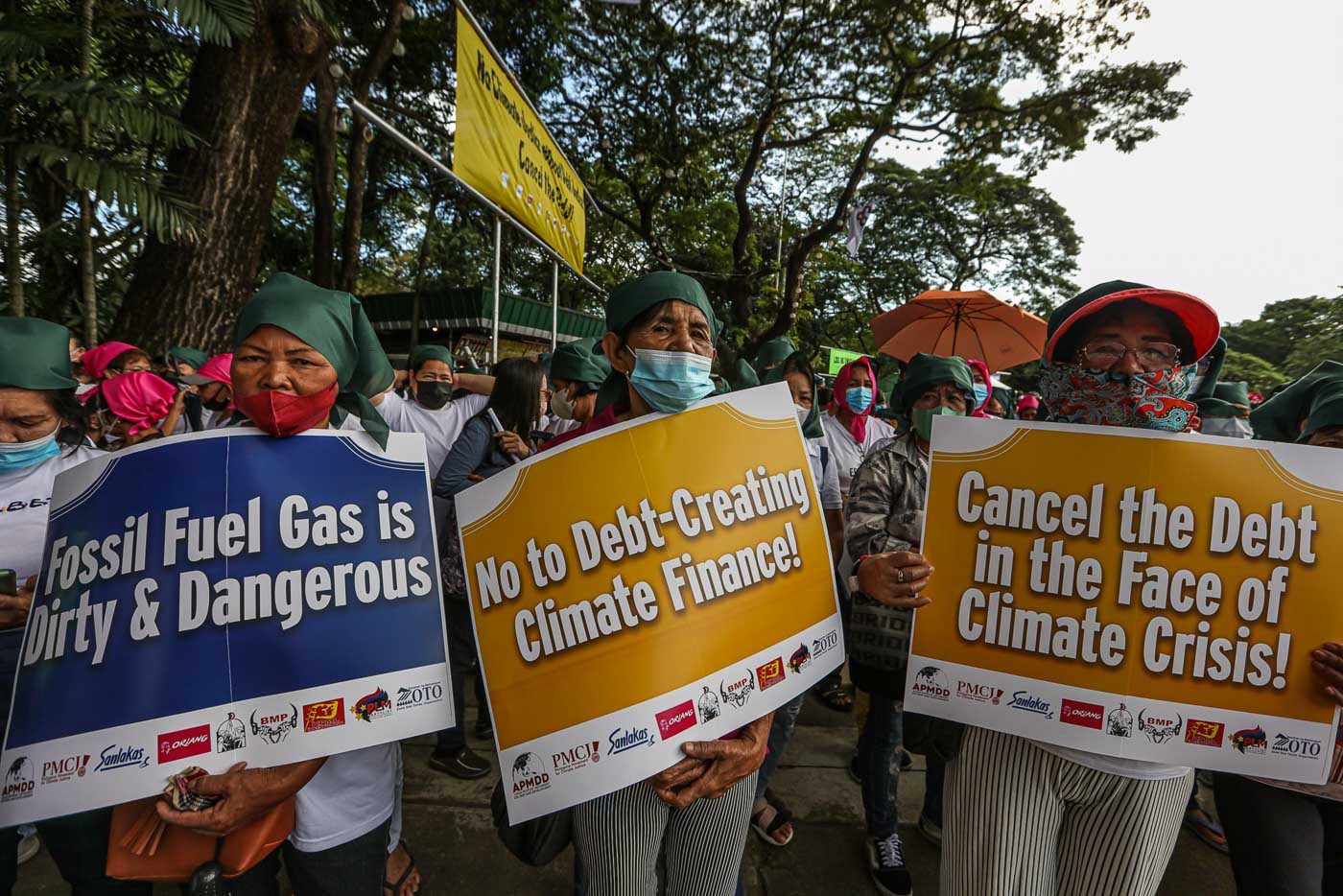
MANILA, Philippines – The Philippine delegation arrived in Egypt for the 27th Conference of the Parties (COP27) of the United Nations (UN) Framework Convention on Climate Change with one thing in mind: demand developed parties to pay up for the climate impacts they caused.
With nations deeply divided over some sticking points, the conference itself has been extended a day.
As one of the countries that bear the brunt of climate impacts, the Philippines delegation’s priorities and positions during COP27 included expanding the definition of loss and damage, pushing for climate finance, and calling for rich countries’ transparency on funds.
The Philippines’ 29-person delegation included Department of Environment and Natural Resources (DENR) Secretary Maria Antonio Yulo-Loyzaga and Climate Change Commission Vice Chairperson Robert Borje.
Here are the priorities and positions they expressed at the climate summit, according to the DENR.
Include extreme climate events, slow onset change in loss and damage definition
Among the biggest agendas and one of the most contentious issues at COP27 is loss and damage. Loss and damage refers to climate impacts that cannot be simply solved by mitigation and adaptation policies.
Even before COP27 started, advocates and vulnerable countries were already amping up the discussion on loss and damage funds. This includes the Philippines, a country well aware of the impacts of worsening typhoons.
In fact, the country pushed for further expanding the definition of loss and damage to include extreme climate events and slow onset changes such as rising sea levels, forest degradation, and loss of biodiversity.
The Philippine delegation demanded that a mechanism be established to provide technical and financial support for countries coping with the loss and damage caused by climate change.
Despite the clamor to establish a loss and damage fund, there were still resistance from some countries, especially in light of the energy crisis caused by Russia’s invasion of Ukraine.
Fund the Santiago Network for Loss and Damage
The Santiago Network is a platform established to connect vulnerable countries with providers of technical assistance.
The Philippines agreed to operationalize and fund the network.
During the previous COP, two Filipinos, lawyer Vicente Paolo Yu III and Philippine negotiator Felix William Fuentebella, helped shape the platform.
Develop an insurance scheme to provide finance help to affected countries
Along with loss and damage, climate finance is at the heart of many affected countries’ agenda, as they continue to seek accountability for worsening climate impacts.
The country’s delegation brought up an insurance scheme to help countries cope and create a solid system of “predictable financial support.”
Currently, climate finance is coursed through development banks and entities such as the Global Environment Facility and the Green Climate Fund.
However, movement leaders were quick to point out that financial help is an obligation that developed parties need to fulfill.
During a press briefing on Friday, November 18, Wanun Permpibul of Climate Watch Thailand emphasized that climate finance shouldn’t be considered as donations.
Lidy Nacpil, coordinator of the Asian Peoples’ Movement on Debt and Development, warned against using climate finance as a way to make profits.
“Climate finance should be provided as grants based on climate debt, not another opportunity for rich countries and corporations to profit from poor and vulnerable countries,” Nacpil had said in a statement last Monday, November 14.
Fast-track negotiations on adaptation
The delegation pushed for expediting negotiations on adaptation.
Fast-tracking these negotiations would mean reducing risk and vulnerability of poorer nations during the onslaught of disasters and extreme weather.
More lives, jobs, and homes could be safeguarded and made resilient if adaptation measures are put in place swiftly.
Demand transparency on climate finance
There is still some resistance from wealthy nations to keep their climate commitments.
Rich countries fall short of what developing countries need to weather disasters: $1 trillion a year in external financing for climate action.
The commitment to pay up for the damages must come with transparency, the Phlippine delegation asserted.
Developed parties must “be transparent in reporting their approaches and strategies for scaling up climate finance,” the DENR said in a statement.
Call for developed countries to lessen emissions, abide by safe carbon budget
The Philippine delegation also emphasized their support for “progressive phasing out of subsidies for fossil fuels, promoting renewable energies, and reducing emissions from deforestation and forest degradation.”
Rich countries should also put in place policies and green infrastructure to lessen their emissions and abide by the remaining safe carbon budget.
The delegation advocated for emissions avoidance to be included in Article 6 of the Paris Agreement, which allows countries to “voluntarily cooperate” to reduce emissions but has so far failed to inspire concrete actions.
According to a UN report, the world should cut 45% of emissions within eight years if it were to limit warming to 1.5 degrees Celsius.
Transforming the global economy to low-carbon would require an investment of at least $4 to $6 trillion annually. – Rappler.com
Add a comment
How does this make you feel?
![[EDITORIAL] Rich countries’ moral responsibility to address climate chaos](https://www.rappler.com/tachyon/2022/11/COP27-EDITORIAL.jpg?fit=449%2C449)







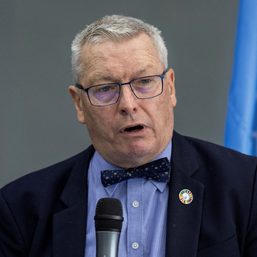
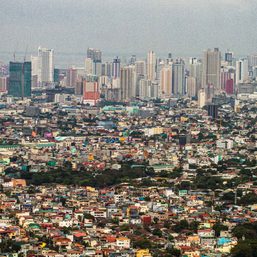








![[OPINION] Grading Marcos admin’s performance on the climate agenda](https://www.rappler.com/tachyon/2024/06/grading-marcos-performance-climate-agenda-june-25-2025.jpg?resize=257%2C257&crop=441px%2C0px%2C1080px%2C1080px)
![[OPINION] No room for ‘business as usual’ in era of climate emergency](https://www.rappler.com/tachyon/2024/06/no-room-business-as-usual-climate-change-june-25-2024.jpg?resize=257%2C257&crop_strategy=attention)
![[OPINION] Climate finance: A call to action for the Philippines](https://www.rappler.com/tachyon/2024/05/tl-climate-finance.jpg?resize=257%2C257&crop=458px%2C0px%2C1080px%2C1080px)
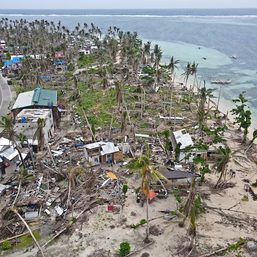
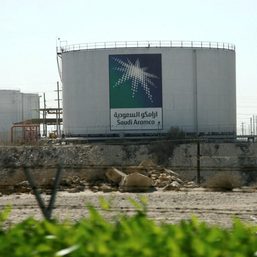





There are no comments yet. Add your comment to start the conversation.